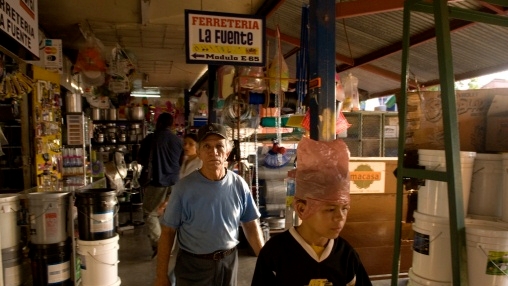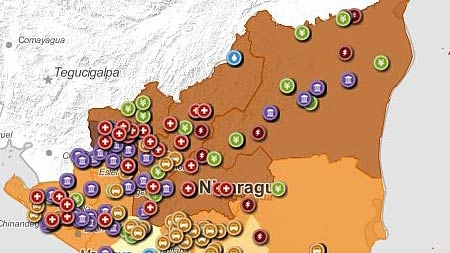CHALLENGE
In mid-2003, the government of Nicaragua announced a new policy to enhance access to financial services, particularly among those poorly served at the lower end of the income scale. It aimed at increasing market transparency, strengthening financial intermediaries and establishing a more robust legal and regulatory framework for microfinance activity, so as to establish a fair and vigorously competitive market supplied by sound, commercially oriented financial institutions.
Access was especially weak in rural areas, and there was concern with the high cost of credit and other financial services to small and micro businesses and households. The government believed that an efficient, competitive financial sector with strong outreach would serve as a powerful instrument for poverty reduction and alleviation. Although microcredit was expanding rapidly in Nicaragua at the time, the proliferation of donor initiatives had led to considerable market fragmentation and poor oversight, undermining the efficiency and viability of the industry.
SOLUTION
The Bank responded with technical assistance lending (TAL) focused on four major needs: a) the improvement of regulation, supervision and enforcement for all micro lenders; b) the reduction of the commercial risk faced by the state development bank—initially FNI and later “Banco Produzcamos (BP)”—in the microcredit marketplace via improvements in its intermediation skills and lending capacity; c) the provision of enhanced support services to unsupervised micro lenders, including NGOs and financial cooperatives, to transform and upgrade their business operations in line with a revamped oversight framework; and d) the development of a statistical platform to monitor access to financial services by the poor and supportive of a more effective financial services access policy.
RESULTS
- The number of financial (deposit and loan) accounts has had an impressive expansion (68.1%) from 2004 to 2012, even after netting out the impact of the 2008 financial crisis. Points of service of supervised intermediaries also increased significantly from around 200 to 320 locations.
- A major overhaul and expansion of financial oversight, particularly of microcredit by the Superintendency of Banks and Other Financial Institutions (SIBOIF) and the creation of the National Commission of Microfinance (CONAMI) in 2011.
- Transformation of two private microfinance institutions into adequately regulated and supervised SIBOIF financial intermediaries. Two other large microfinance institutions are well advanced in this process. In addition, over 18 microfinance institutions are now registered for oversight under CONAMI.
- BP, the state development bank, launched a risk-based credit line to supply funding to financial cooperatives and microcredit lenders—the bank had twelve of these clients at end-2012.
- Establishment of the SIBIOF-licensed credit bureau “SinRiesgos” in 2006, whose database initially covered only micro credit, but has since expanded to cover a broad range of over 1.85 million debtors.
- In 2008, support to communal banks and group lending for women in the Caribbean coast (RAAN and RAAS regions) along with capacity building of microfinance institutions operating in these regions.
- Overall improved commercial practices and institutional and human capital development in the microfinance industry. Productivity improvements due to targeted training, the promotion and development of more sophisticated management tools, and more advanced information and accounting systems.
WORLD BANK GROUP CONTRIBUTION
IDA provided a US$7 million credit for this operation, of which nearly US$5.3 million were disbursed. Despite a challenging macroeconomic and institutional environment, this project achieved important results. World Bank’s presence and high responsiveness was vital to enduring impact of the 2008 global financial crisis and the “no pago” microfinance movement.
PARTNERS
This TAL operation had a catalytic impact, generating alliances with other donors and attracting complementary funding (US1.33 million) from the Dutch and Japanese governments and the Inter -American Development Bank (IADB), which were given disbursement priority. IADB has been particularly active supporting CONAMI and supplying fresh funding and technical assistance to BP.
MOVING FORWARD
Now that the legal framework for microfinance is by and large in place, future emphasis will be on perfecting the regulatory framework and the oversight function of microfinances, including consumer protection. The 2012-2017 CPS is following this TAL with a series of smaller technical assistance grants and collaboration with IFC and MIGA in the sector.
BENEFICIARIES
World Bank investments in human capital in rural areas allowed microfinance institutions to assist would-be entrepreneurs to navigate the complicated loan process. For example, Marleni opened a small convenience store in Puerto Cabezas, with a C$15,000 (US$650) loan from PanaPana NGO. Over the course of several years, Marleni received and paid back six loans.
Since her education only reached the third grade, she appreciates the help she receives from PanaPana’s loan agent, Jeny, who fills out the paperwork for her and walks her through the requirements. Jeny is one of several agents who received training as a result of World Bank financing. PanaPana’s staff training on microfinance, accounting and loan restructuring policies allow loan agents to better respond to client needs at the time of a loan’s approval and during the repayment process.

